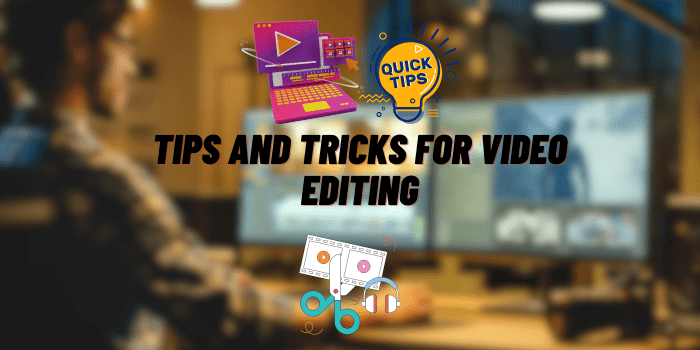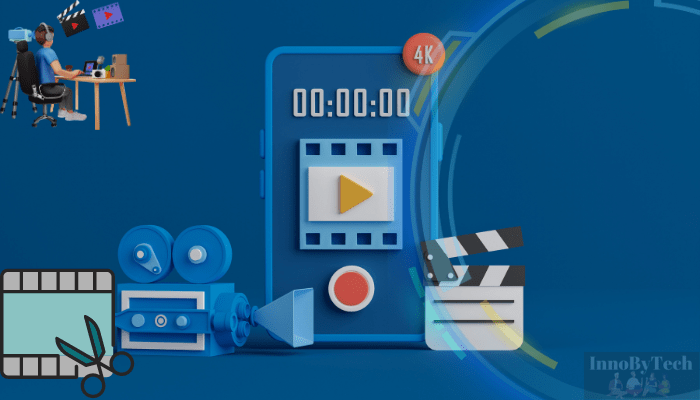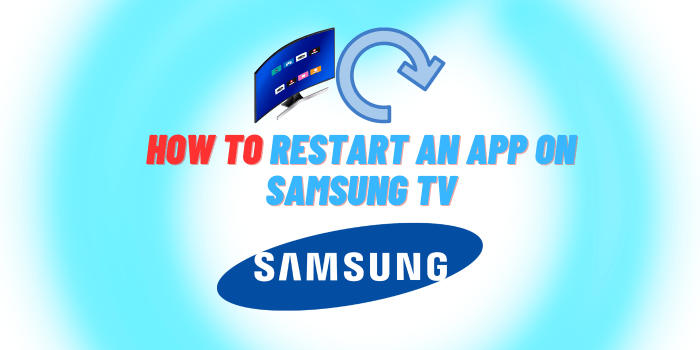Tips and Tricks for Video Editing
Video editing is the process of manipulating and arranging video clips to create a coherent and visually appealing story. It involves a combination of technical skills and creative intuition. Here are some valuable tips to help you get started.
Choosing the Right Software

When it comes to video editing, the software you choose can significantly impact your workflow and the quality of your final product. Let’s explore some popular video editing software options in more detail:
- Adobe Premiere Pro: This industry-standard software is known for its versatility and powerful editing capabilities. It offers a wide range of tools for both beginners and professionals, making it a top choice for many.
- Final Cut Pro: If you’re a Mac user, Final Cut Pro is an excellent choice. It’s optimized for Apple hardware and offers a seamless editing experience. It’s favored by many professional editors.
- DaVinci Resolve: This free-to-use software is a hidden gem in the world of video editing. It provides advanced color correction and grading tools, making it a favorite among colorists and filmmakers.
- VSDC Free Video Editor: VSDC stands out as a free video editing tool with a user-friendly interface. It offers a variety of features, including video and audio effects, masking, and more. Perfect for those on a budget.
Organizing Your Media Files
Efficiently organizing your media files can save you countless hours of frustration and help you maintain a smooth workflow. Consider creating a folder structure that makes sense for your projects. Here are some additional tips:
- Use clear and descriptive file names for your media assets. This will make it easier to identify and locate specific files.
- Backup your media files regularly to prevent any loss of data. Invest in external hard drives or cloud storage solutions to ensure your files are secure.
- Create a dedicated folder for project files, including your video editing project file, audio files, and any graphics or animations you plan to use.
Mastering Basic Editing Techniques

As you delve into the world of video editing, it’s essential to master basic editing techniques. Let’s expand on a few key concepts:
- Timeline: The timeline is where you arrange your video clips and make cuts and edits. Understanding how to use it effectively is fundamental to video editing.
- Cutting and Trimming: Cutting allows you to remove unwanted sections from your clips, while trimming helps you adjust the in and out points of a clip for precise timing.
- Rearranging Clips: Drag and drop clips on the timeline to change their order or sequence. This is crucial for crafting a cohesive narrative.
- Adding Music and Sound Effects: Incorporating background music and sound effects can elevate your video. Ensure that the audio enhances the storytelling and doesn’t overpower the visuals.
Adding Transitions for Smooth Flow
Transitions are more than just a way to move from one scene to another; they can enhance the overall viewing experience. Let’s explore a few transition techniques in detail:
- Cut: The simplest transition is a direct cut from one clip to another. It creates a sharp and straightforward change between scenes.
- Fade: A fade transition involves gradually increasing or decreasing the opacity of one clip while simultaneously doing the opposite with the next clip. This creates a smooth, gradual transition.f
- Crossfade: Also known as a dissolve, a crossfade involves overlapping two clips and gradually fading one out as the other fades in. It’s a classic transition for scene changes.
- Swipe and Wipe: These transitions involve elements moving across the screen, revealing the next scene. They can add dynamism to your videos.
Enhancing Audio Quality
Clear and high-quality audio is essential for engaging your audience. Let’s dive deeper into audio enhancement:
- Noise Reduction: In addition to removing background noise, consider using noise reduction tools to clean up audio recordings and make them crisp and clear.
- Equalization: Adjusting the EQ of your audio can help enhance certain frequencies, making voices and music sound more natural and balanced.
- Audio Effects: Experiment with audio effects like reverb, chorus, and compression to add depth and richness to your audio tracks.
- Voiceovers: If you have voiceovers in your video, make sure they are well-scripted and professionally recorded. A good voiceover can significantly enhance your video’s impact.
- Music Selection: Choose music that complements the mood and message of your video. Ensure that you have the necessary licenses or permissions to use copyrighted music.
Incorporating Text and Graphics
Text and graphics can convey important information or enhance the storytelling aspect of your video. Use text overlays, titles, and captions effectively to engage your audience and convey your message.
Color Correction and Grading

Color correction and grading can transform the mood and atmosphere of your video. Let’s delve into these processes:
- Color Correction: This involves adjusting the colors in your footage to ensure they are accurate and balanced. Correcting white balance, exposure, and contrast are common tasks.
- Color Grading: Color grading takes correction a step further by enhancing the visual style of your video. It involves creative adjustments to achieve a specific look or mood.
- LUTs (Look-Up Tables): LUTs are pre-defined color profiles that can be applied to your footage to achieve specific looks or styles, such as cinematic or vintage.
- Consistency: Maintain a consistent color palette throughout your video to create a cohesive and professional appearance.
Special Effects and Filters
These can add a unique touch to your videos and make them stand out. Here are some specific effects to consider:
- Lens Flares: Lens flares can add a sense of depth and realism to your video. Experiment with different types of flares to find the one that suits your project.
- Particle Effects: If you want to create a magical or dreamy atmosphere, particle effects can work wonders. They can simulate rain, snow, or even fire.
- Artistic Filters: Consider applying artistic filters to create a specific visual style. Filters can mimic the look of oil paintings, watercolors, and more.
- Green Screen (Chroma Key): Green screen allows you to replace the background of your footage with any image or video, opening up creative possibilities.
Exporting and Rendering

When you’re satisfied with your edit, it’s time to export and render the final video. Choose the appropriate format and resolution based on your intended platform (YouTube, Instagram, etc.). Pay attention to settings for optimal quality.
Staying Updated with Trends
The world of video editing is constantly evolving. Stay updated with the latest trends, techniques, and software updates to keep your skills sharp and your content fresh.
Conclusion
Becoming a proficient video editor takes time, practice, and a willingness to learn. By following these tips and tricks, you can enhance your video editing skills and create content that captures your audience’s attention.






